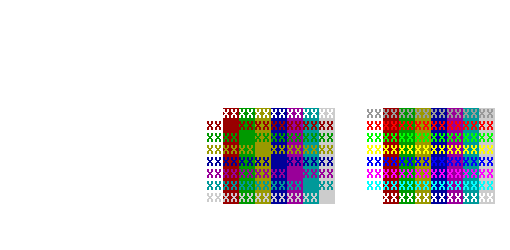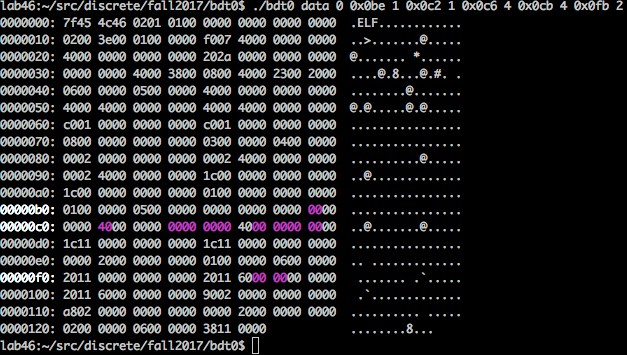

As trigraphs have been removed from C++, the question mark escape sequence is no longer necessary. The question mark escape sequence \ ? is used to prevent trigraphs from being interpreted inside string literals: a string such as "?/" is compiled as " \", but if the second question mark is escaped, as in "? \?/", it becomes "?/".

Ansi escape sequences function keys code#
If the value represented by a single hexadecimal escape sequence does not fit the range of values represented by the character type used in this string literal ( char, char8_t, (since C++20) char16_t, char32_t, (since C++11)or wchar_t), the result is unspecified.Ī universal character name in a narrow string literal or a 16-bit string literal may map to more than one code unit, e.g. Hexadecimal escape sequences have no length limit and terminate at the first character that is not a valid hexadecimal digit. Octal escape sequences have a limit of three octal digits, but terminate at the first character that is not a valid octal digit if encountered sooner. Some systems mark their lines with length fields instead. The new-line character \n has special meaning when used in text mode I/O: it is converted to the OS-specific newline representation, usually a byte or byte sequence. \ 0 is the most commonly used octal escape sequence, because it represents the terminating null character in null-terminated strings. Other characters never occur in a Unicode character name, and thus their appearance in a n-char-sequence always renders the program ill-formed. None of these names or aliases have leading or trailing spaces.Ī valid n-char-sequence must contain only uppercase Latin letters A through Z, digits, space, and hyphen-minus. These aliases are listed in the Unicode Character Database’s NameAliases.txt. It designates the corresponding character in the Unicode Standard ( chapter 4.8 Name) if the n-char-sequence is equal to its character name or to one of its character name aliases of type “control”, “correction”, or “alternate” otherwise, the program is ill-formed. If a universal character name does not correspond to a scalar value of a character in the translation character set, the program is ill-formed.Ī character from the translation character set, except the right curly bracket } or new-line characterĪ universal character name of the syntax above is a named universal character. If a universal character name corresponding to a scalar value of a character in the basic character set or a control character appear outside a character or string literal, the program is ill-formed. If a universal character name does not correspond to a code point in ISO/IEC 10646 (the range 0x0-0x10FFFF, inclusive) or corresponds to a surrogate code point (the range 0xD800-0xDFFF, inclusive), the program is ill-formed. If a universal character name used in a UTF-16/32 string literal does not correspond to a code point in ISO/IEC 10646 (the range 0x0-0x10FFFF, inclusive), the program is ill-formed. If a universal character name corresponds surrogate code point (the range 0xD800-0xDFFF, inclusive), the program is ill-formed. If a universal character name corresponding to a code point of a member of basic source character set or control characters appear outside a character or string literal, the program is ill-formed. In other words, members of basic source character set and control characters (in ranges 0x0-0x1F and 0x7F-0x9F) cannot be expressed in universal character names. If a universal character name corresponds to a code point that is not 0x24 ( $), 0x40 ( nor 0圆0 ( `) and less than 0xA0, the program is ill-formed. The character c in each conditional escape sequence is a member of basic source character set (until C++23) basic character set (since C++23) that is not the character following the \ in any other escape sequence.

The following escape sequences are available:Ĭode unit n.

Escape sequences are used to represent certain special characters within string literals and character literals.


 0 kommentar(er)
0 kommentar(er)
